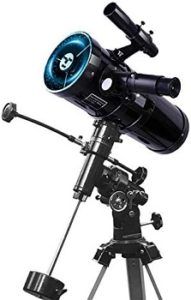
This, therefore makes the aperture the most important factor of basically any telescope. Similar to animal vision, the wider and larger this lens diameter or aperture, the more you can observe. ApertureĪperture is the total diameter of the lens (or mirror) of your telescope. The key factors to look for when choosing a telescope for your kids are Aperture, Focal Length, Magnification and Computer Control. If you’re not familiar with the subject of telescopes, you might rush off and buy the first affordable telescope you see, as a result of this, you may get the telescope that isn’t the right fit for your child. Kids telescopes come in all shapes and sizes with different specifications. This link takes you away from NASA Space Place.What to Look for in choosing a telescope for a child? Paper models of your favorite solar system explorers. exploreīuild a model spacecraft to explore the solar system! Help the big antennas gather data from the spacecraft. Share these with your friends and family! doĪnd how does it help us find new planets? explore Paint pumpkins with space and Earth science designs do What is out there that you cannot see with your bare eyes? explore Put clues together to find the planets and moons. What do you get when you cross an earthquake with a tidal wave? explore These spacecraft traveled to the outer planets! explore Voyager 1 and 2: The Interstellar Mission Glorious planets and moons to view or print. exploreĬould they have brought the water to our planet? explore doĪstronomers may have found a planet without a sun! exploreĮxplore the many volcanoes in our solar system using the Space Volcano Explorer. Write your own zany adventure story! playįor the New Moon, you must eat all the creme filling! do The story starts about 4.6 billion years ago, with a cloud of stellar dust. Jupiter's core is very hot and is under tons of pressure! explore How far would we have to travel to get there? explore Jumping the Tallest Cliff in the Solar System Interstellar space begins where the sun’s magnetic field stops affecting its surroundings. The smallest planet in our solar system explore The icy bits past Neptune’s orbit explore exploreĭwarf planet Pluto is still fun to study. It's not because the Moon gets hit by meteors more often. Learn more about this icy moon of Jupiter! explore We have one, but some planets have dozens. Learn to make a graph with the answer! explore Learn more about the planets in our solar system explore The hottest planet in our solar system explore The planet that spins on its side explore The coldest planet in our solar system explore How do rovers help us learn more about the Red Planet? explore Learn more about the first rover to land on Mars! explore What did these twin rovers teach us about the history of water on Mars? explore But did it also have other conditions needed for life? explore This future mission will try to find out if life ever existed on the Red Planet! explore Make a mask and pretend to be your favorite planet in our solar system! do Learn more about asteroids, meteors, meteoroids, meteorites, and comets! exploreĪnd what can we learn from these space rocks in our solar system? explore

exploreĪsteroid or Meteor: What's the Difference? It all has to do with the distance between Earth and the sun and Earth and the moon. How Is the Sun Completely Blocked in an Eclipse? Learn more about what happens when the moon passes between Earth and the sun! explore We can use a planet’s gravitational pull like a scale! explore Yes, there is ice beyond Earth! In fact, ice can be found on several planets and moons in our solar system. What Is the Weather Like on Other Planets?Įach of the planets in our solar system experiences its own unique weather. The biggest planet in our solar system explore exploreĭrive around the Red Planet and gather information in this fun coding game! play But did you know that on Mercury you’d have a birthday every 88 days? Read this article to find out how long it takes all the planets in our solar system to make a trip around the Sun. You probably know that a year is 365 days here on Earth. Where there are signs of water, there might also be signs of life! explore Make a Colorful Crayon Europa with Textures!Ĭreate your own colorful crayon Europa with textures! doĬolor Your Universe: Find the Hidden ObjectsĬan you find all the NASA and space-themed hidden objects? play


 0 kommentar(er)
0 kommentar(er)
